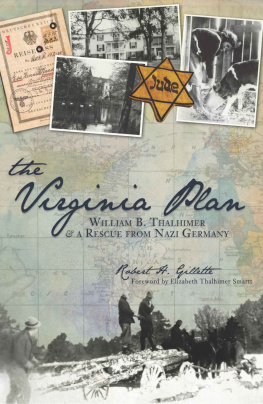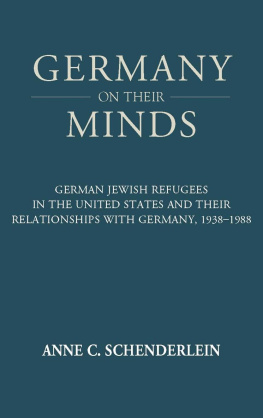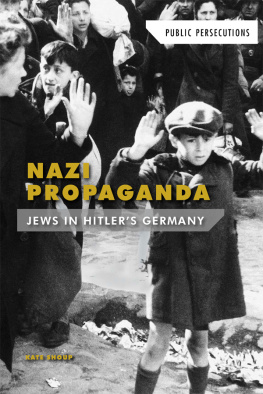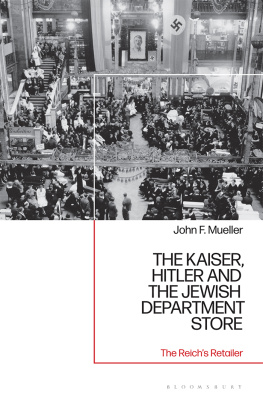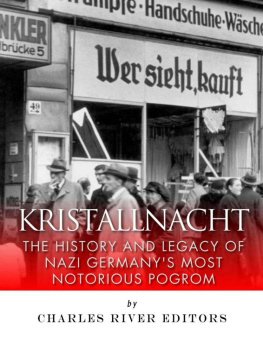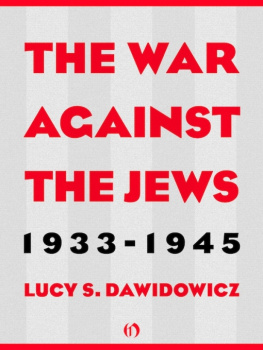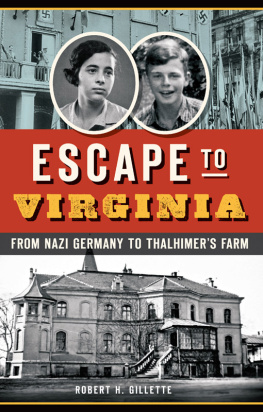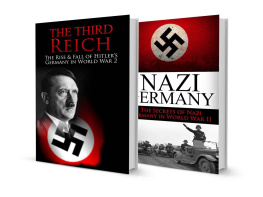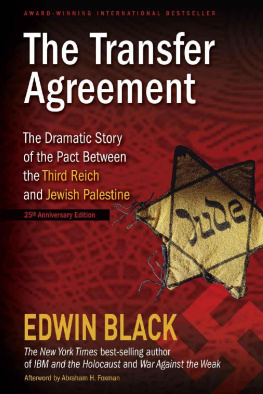The twilight zone that lies between living memory and written history is one of the favorite breeding places of mythologyIt is my hope in these pages to turn a few beams of light into the twilight zone and if possible to light up a few of its corners.
C. Vann Woodward
The Strange Career of Jim Crow
A historian, in my estimation, has to do two things, especially when dealing with a subject such as this: one, research and analyze; and two, remember that there is a story to be told, a story that relates to peoples lives. So a real historian is also a person who tells [true] storiesa historian must also be a teacher, and teachers have to remember that their pupils, and indeed themselves, are just like the people they talk about in their telling of history.
Yehuda Bauer
Rethinking the Holocaust
Every moment one delays his efforts to redeem captives when he could have helped them, is considered as if he had shed blood.
Shulchan Aruch
Yoreh Deah 252:3
Foreword by Elizabeth Thalhimer Smartt
Published by The History Press
Charleston, SC 29403
www.historypress.net
Copyright 2011 by Robert H. Gillette
All rights reserved
First published 2011
e-book edition 2011
ISBN 978.1.61423.098.4
Library of Congress Cataloging-in-Publication Data
Gillette, Robert H.
The Virginia plan : William B. Thalhimer and a Rescue from Nazi Germany / Robert H. Gillette.
p. cm.
Includes bibliographical references and index.
print edition ISBN 978-1-60949-171-0
1. Hyde Farmlands. 2. Jews--Virginia--Burkeville--History--20th century. 3. World War, 1939-1945--Jews--Rescue--United States. 4. Jewish refugees--Virginia--Burkeville. 5. Jews, German--Virginia--Burkeville. 6. Jews--Germany--History--1933-1945. 7. Jewish youth-Germany--History--20th century. 8. Jdisches Auswandererlehrgut Gross-Breesen. 9. Thalhimer family. 10. Bondy, Curt, 1894-1972. 11. Virginia--Emigration and immigration.
12. Burkeville (Va.)--Ethnic relations. I. Title.
F234.B87.G55 2011
975.5637--dc22
2011002120
Notice: The information in this book is true and complete to the best of our knowledge. It is offered without guarantee on the part of the author or The History Press. The author and The History Press disclaim all liability in connection with the use of this book.
All rights reserved. No part of this book may be reproduced or transmitted in any form whatsoever without prior written permission from the publisher except in the case of brief quotations embodied in critical articles and reviews.
My Hope
That this book adequately honors the memories of William B. Thalhimer and Dr. Curt Bondy, for their courage and unlimited desire to rescue young people from Nazi Germany.
That the Gross Breesen Spirit that was embodied within each students lifelong love of life itself be conveyed to generations to come and give them hope and guidance.
That this book testifies to the best inclinations of the human spirit.
For Jodi Gillette, who clung to the hunch that there was a glorious story at Hyde Farmlands and urged me to find out.
C ONTENTS
F OREWORD
My great-grandfather, William B. Thalhimer Sr. (known to our family as Gramps), saved dozens of German Jewish teenagers from Nazi persecution by instituting the Hyde Farmlands project. One might think that our family has proudly passed down stories of Grampss experiences with the farm, but the opposite has happened. The stories were brushed under the rug and rarely discussed. We heard tidbits about Hyde Farmlands over the years, but nothing substantial.
When I wrote the book Finding Thalhimers about six generations of my paternal family and the history of their department store, Thalhimers, I began to uncover layers of the Hyde Farmlands story. I met original Hyde Farmlanders and trekked around the farm with them in September 2004, microphone and digital tape recorder in hand. I scouted out the old chicken coops with Ernst Cramer, explored the main farmhouse with George Landecker and, months later, attended synagogue services with Hans George Hirsch. Their unshakable resilience, strength of character and love of life was exhilarating. I had the pleasure of meeting these incredible survivors because of something phenomenal that my great-grandfather did almost seventy years prior, something about which I still knew very little.
With trembling hands, I read Werner T. Angresss Between Fear and Hope: Jewish Youth in the Third Reich, which included mentions of Grampss involvement in bringing the young refugees to a remote farm that he had purchased with his cousin in rural Virginia. The more I learned, the more I sought to know. Writing my own book required research on nearly two centuries of history, and unfortunately I could not focus solely on researching Hyde Farmlands.
Things changed the day my father, William B. Thalhimer III, and I met Bob Gillette at the Virginia Holocaust Museum. We had been informed by one of the museum staff that Mr. Gillette was interested in the Hyde Farmlands story. Seven months pregnant, I slowly eased into a chair and listened as Mr. Gillette spoke of his own unusual discovery of Hyde Farmlands and of his desire to document the whole story. I felt such joy, delight and relief that someone else, who happened to be a respected former educator, wanted to pursue diligent study of this little-known chapter in our familys history, as well as the overarching history of American immigration in the 1930s.
I feel that same joy now as I introduce this story to you. After reading, I hope that you will pass this book along to others so that it will not be forgotten. Set during a time of unspeakable tragedy and human failing, the Hyde Farmlands story invokes hope, spirit and something that Gramps called stick-to-it-iveness. It is a ray of light shining through the darkest part of the attic. Thanks to Bob Gillette, it is now once again illuminated.
Elizabeth Thalhimer Smartt
A CKNOWLEDGEMENTS
Throughout my research, even people who did not know me opened their doors and welcomed me into their homes, their libraries and their memories. To all I am indebted, for their helpfulness and their trust.
My research journey started in and eventually returned to Richmond, Virginia. At the Virginia Holocaust Museum, Dianna Gabaycurator, archivist and director of exhibitions and collectionswas my greatest cheerleader right from the beginning. She led me through the tangled jungle of archives and photographs and connected me to the Thalhimers. Bonnie Eisenman, director of the Beth Ahabah archives, steered me to Thalhimer materials. Inge Horowitz connected me to people in the community and to her memories of Dr. Curt Bondy as a professor. The Thalhimer family offered insights and materials: Charles Thalhimer, son of William Thalhimer, shared memories and photographs; Barbara Thalhimer, daughter-in-law of William, allowed me to peek into Thalhimer family life; William Thalhimer III shared his enthusiasm for the project; his daughter, Elizabeth, Williams great-granddaughter and author of Finding Thalhimers, shared family archives and encouraged me so that her own family could learn more about a family patriarch; and the son of Williams cousin Morton Thalhimer, also Morton, provided materials and insights into his fathers life and personality. Richard Hamlin shared stories of being a neighbor to those at Hyde Farmlands. John Cohen, son of Leroy Cohen, and Lou Bowman fleshed out Leroys personality.
Next page
